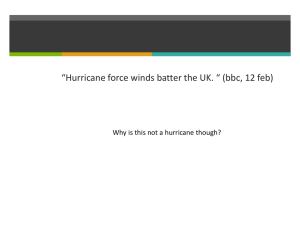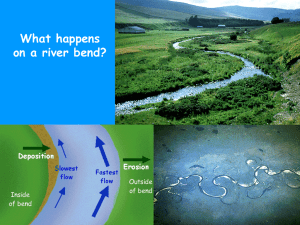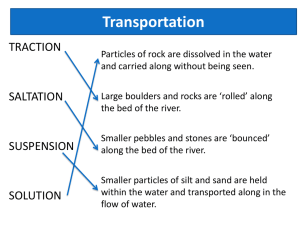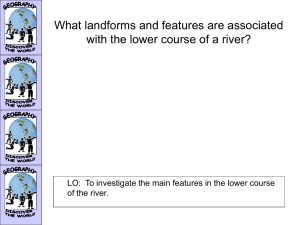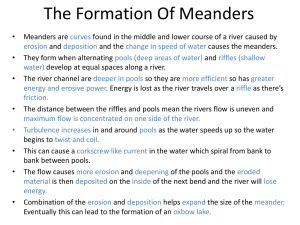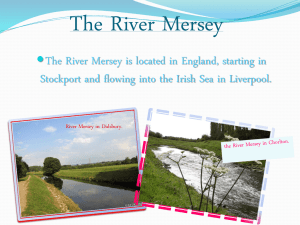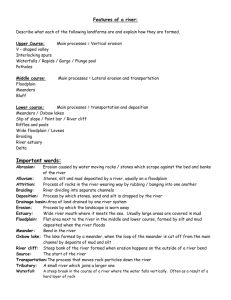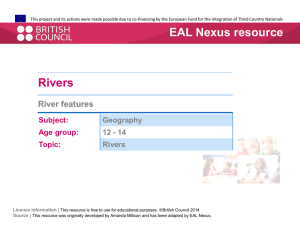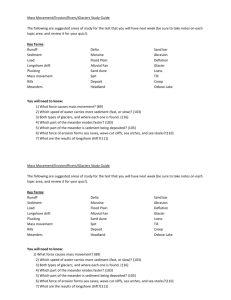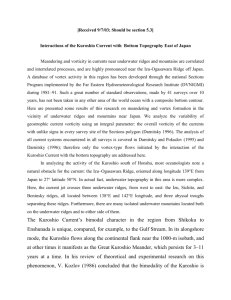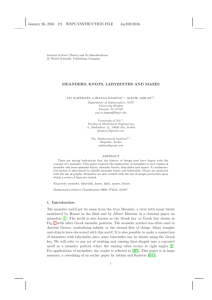25: Erosion and deposition on a meander
advertisement
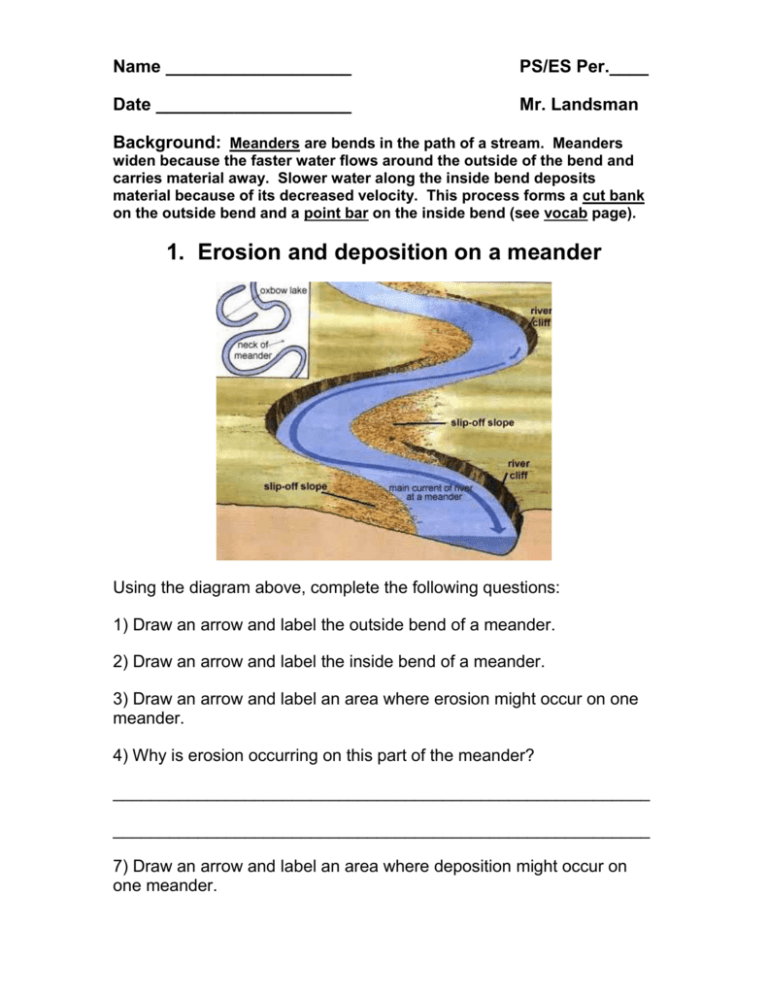
Name ___________________ PS/ES Per.____ Date ____________________ Mr. Landsman Background: Meanders are bends in the path of a stream. Meanders widen because the faster water flows around the outside of the bend and carries material away. Slower water along the inside bend deposits material because of its decreased velocity. This process forms a cut bank on the outside bend and a point bar on the inside bend (see vocab page). 1. Erosion and deposition on a meander Using the diagram above, complete the following questions: 1) Draw an arrow and label the outside bend of a meander. 2) Draw an arrow and label the inside bend of a meander. 3) Draw an arrow and label an area where erosion might occur on one meander. 4) Why is erosion occurring on this part of the meander? _________________________________________________________ _________________________________________________________ 7) Draw an arrow and label an area where deposition might occur on one meander. 2. Formation of an oxbow lake Flow 1) Look carefully at the photo above. Draw arrows to label the following: A) B) C) D) E) meander neck inside bend of a meander outside bend of a meander site where erosion might be occurring site where deposition might be occurring. 2) Look at the diagrams and the writing on the next page. They explain how an oxbow lake is formed, but they are mixed up. Decide which piece of writing goes with which diagram. Cut out the diagrams and the writing. Paste them in the correct order so each diagram has its matching caption. Use a clean page of printer paper. Include a heading. Please clean up your mess. 2. Formation of an oxbow lake (cont) The water flows around the Over time, deposits of sediment build meander. Erosion occurs on the up by the backwater. The backwater is outside bend and deposition occurs eventually cut off, leaving a kidneyon the inside bend. shaped oxbow lake behind. The water breaks across the neck of The water is flowing the fastest on the the meander. For a short time, water outside bend. Over time, the meander flows around the backwater and becomes an S shape. A thin strip of across the neck of the meander. land called a neck is created at the beginning and the end of the meander. 3) On the cut-out diagrams, label the following features: - oxbow lake (duh) - backwater - neck of a meander 4) What do you think will happen to the oxbow lake over time? Why? Answer on pasted sequence page.


